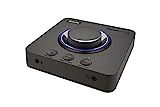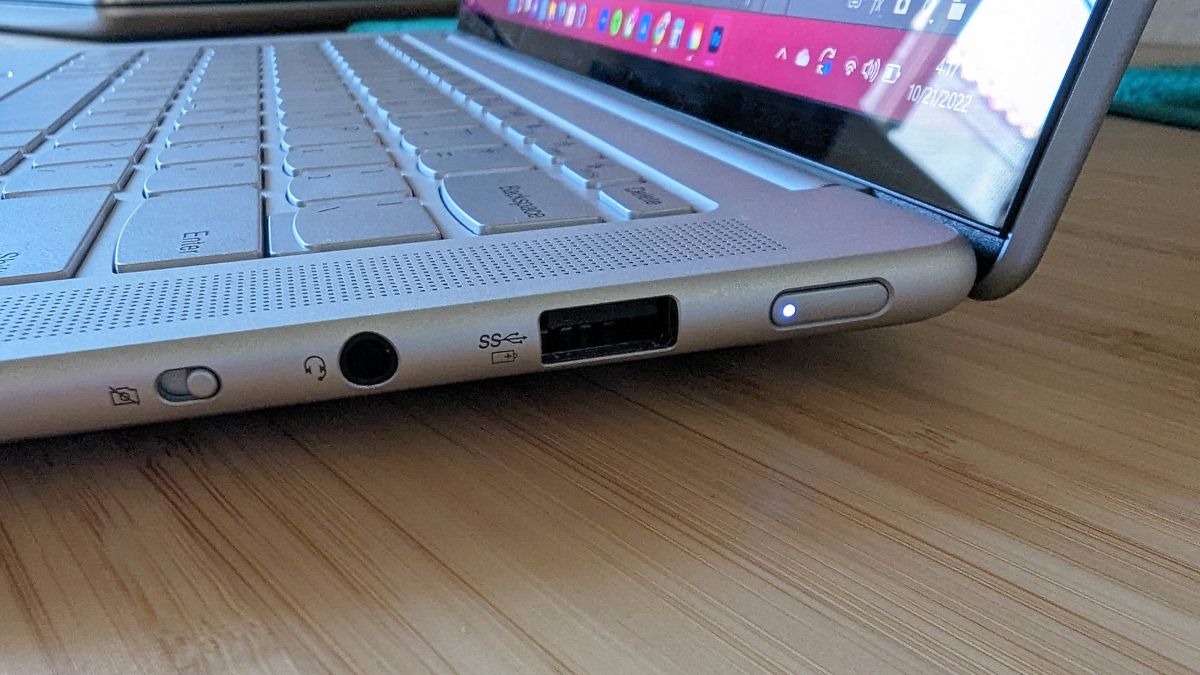Quick Links
Few people bother to buy dedicated sound cards these days, more than happy to use the sound hardware built into their motherboard or laptop computer. However, if you've only used integrated onboard sound, you may be missing out on audio nirvana.
Sound Quality Is Limited
Onboard sound is often added to a motherboard as a convenience. It's one less component to buy and audio is no longer an optional feature on modern computers. However, as a result, onboard sound may only offer the bare minimum when it comes to audio quality.
While that may be fine for the bings and bongs of system notifications or the odd YouTube video, if you want to enjoy music, games, movies, or any other content where quality sound matters, onboard sound can come up short.
This can present as audio that sounds compressed or muffled. You may find that sound lacks punch and range. This is especially apparent when you use better-quality speakers or headphones, where the onboard sound chip becomes the bottleneck rather than the speakers.
Unwanted Noise Is Common
Integrated audio shares its circuit board with numerous other components on the motherboard. Although many use shielding, you may still notice humming, hissing, crackling, or other audio artifacts caused by electrical interference.
Given how integrated audio works, it's difficult to completely isolate the circuits that carry audio signals to your speakers. This can also affect a dedicated soundcard in some cases, but it's much less likely; most dedicated cards are carefully designed to keep the audio circuits free from audible interference.
It Probably Has Poor Amplification
The audio signal coming from your onboard sound chip is amplified so that passive headphones and speakers will still be audible when you plug them in. If you're using amplified speakers, the internal audio amplifier essentially acts as a pre-amplifier so that you get a strong clean signal.
Unfortunately, typical integrated audio solutions have low-quality amplification that not only affects audio quality but doesn't work well with high-impedance headphones, resulting in low-volume audio.
Not All Onboard Audio Is Bad
While mediocre audio quality is common on most motherboards out in the wild, that doesn't mean all onboard audio is poor. High-end laptops and motherboards may have included audio designed specifically to address these common issues. The audio card may be a separate module, or the DAC (Digital to Audio Converter) may be a higher-end model that supports higher-quality audio and more features. Likewise, it may have an improved internal amplifier.
In other words, don't assume that your onboard audio is bad without actually listening to it first. It would be unfortunate if you spent money on an alternative and it turns out your onboard sound was just as good!
These Alternatives Will Improve Your Audio
So if you have sucky onboard audio, what can you do about it? Some really good internal and external substitutes aren't hard to find, in fact. Plus, since most people stick with onboard audio, alternative products tend to focus on offering a better experience rather than middle-of-the-road audio.
If you're using a desktop computer with a free PCIe slot, the most common solution is a dedicated sound card. These can vary in price and features, but even the more budget-oriented models should beat typical onboard audio.

Creative Sound Blaster Z SE Internal PCI-e Gaming Sound Card and DAC
For a reasonable price, you can get a significant upgrade over your computer's onboard sound and score a bev of additional inputs for 7.1 surround sound setups.
If you're using a laptop or don't have room inside your computer, you can also use a USB sound card, sometimes called an external DAC. These may cost a little more than the equivalent internal card, but they have some advantages. For one, you can share them between different computers, and they're much less likely to suffer from audio interference since the electronics are in a shielded external box.

Creative Sound Blaster X4 Hi-Res 24bit/192kHz External USB DAC and Amp
If your laptop (or desktop) isn't cutting it in the audio department out of the box, this USB DAC from Creative take things to the next level, and then another level beyond that. No PCIe slot needed.
If you're using good headphones, you may instead want to purchase a dedicated headphone amp. There are even models that use analog vacuum tubes for that warm sound, although how effective this approach is stirs much debate on audio forums.
USB headphones which come with their own DACs are also a good option if you don't care about external speakers at all. Just plug the headphones into a free USB port and you're ready to go. How much better this is than your onboard sound depends on the quality of the DAC and headphones, but at the very least these headphones should avoid unwanted interference, hum, and other nasty noises.
Finally, using wireless audio (either Bluetooth or proprietary wireless solutions) also bypasses your onboard audio. Depending on the quality of the headset and its DAC, this can offer a significantly better audio experience. Just keep in mind that some wireless implementations can introduce a noticeable amount of delay, which may affect games, movies, and sync-sensitive applications such as video editing software.

